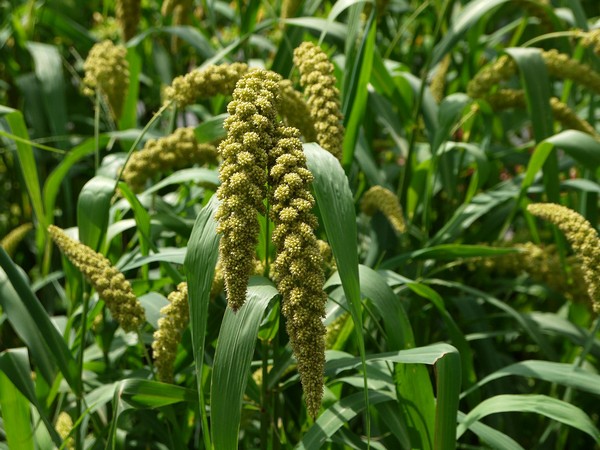Whole genome of highly adaptable foxtail millet sequenced

- Country:
- India
In a new research, scientists have mapped the complete genome of an important cereal crop, Setaria or foxtail millet, advancing our understanding of its domestication and evolution, along with a genetic explanation for its agricultural traits.
The study was led by researchers at the Chinese Academy of Agricultural Sciences, China, and included scientists at New York University, US, and is published in the journal Nature Genetics.
''Because it is a crop that can grow across a wide range of environments - including arid lands - it has the potential to be important for food security under climate change,'' said Michael Purugganan, the study's co-senior author.
Foxtail millet, considered to be the foundation for early Chinese civilisation, is one of the oldest domesticated grain crops in the world and has been grown by humans for roughly 11,000 years. It held a dominant position in Chinese agriculture before the introduction of high-input agricultural practices like irrigation and chemical fertilizers.
The protein-rich grain is resilient to drought and able to thrive in low-nutrient soils because it employs C4 photosynthesis, a highly efficient form of photosynthesis helping it adapt to different environments.
The researchers established the entire set of Setaria's, or the Setaria pan-genome, by assembling 110 representative genomes from a worldwide collection of 1,844 Setaria species.
Performing large-scale genetic studies for 68 traits across 22 environments in 13 geographical locations, each climatically distinct, the scientists identified potential genes and marker-panels for foxtail millet's geographical evolution and enhancement.
For instance, the researchers found that the gene SiGW3 regulates grain yield of foxtail millet.
Further, by constructing the first graph-based genome sequence of Setaria, the scientists offered insights into genomic variation across wild and cultivated Setaria, an understanding of which equips researchers with valuable genetic tools to pursue biological research and breeding efforts.
''This paper is a significant milestone, as it paves the way for the next generation of comparative genomics studies that can help to decipher the molecular mechanism of C4 photosynthesis.
''The large-scale comparative genomics, genome-wide association study, and genomic selection studies of Setaria not only provide opportunities for gene discovery and breeding advancements in foxtail millet itself, but also offer insights for other crops to enhance global food security,'' said Diao.
C4 plants constitute only about 3 per cent of flowering plant species, but contribute to approximately 25-30 per cent of global biomass production, the researchers said.
''Understanding the genetic basis underlying the domestication and improvement of foxtail millet, along with these important agricultural characteristics, holds significant potential for its enhancement.
''With our graph-based genome, we can estimate grain quality-related traits and potential yield, providing avenues for foxtail millet breeding for climate change adaptation,'' said Qiang He, a postdoctoral researcher at the Chinese Academy of Agricultural Sciences and the study's first author.
(This story has not been edited by Devdiscourse staff and is auto-generated from a syndicated feed.)
ALSO READ
China Halts Dual-Use Exports to Japan Amid Rising Tensions
Cultural Symphony: China-Cambodia's Harmonious Ties
Ireland Eyes Strategic Trade Gains with China Amid Dairy and Beef Tensions
China-Ireland Economic Partnership Strengthens Amid Global Trade Tensions
China Restricts Rare Earth Exports to Japan Amid Taiwan Tensions










